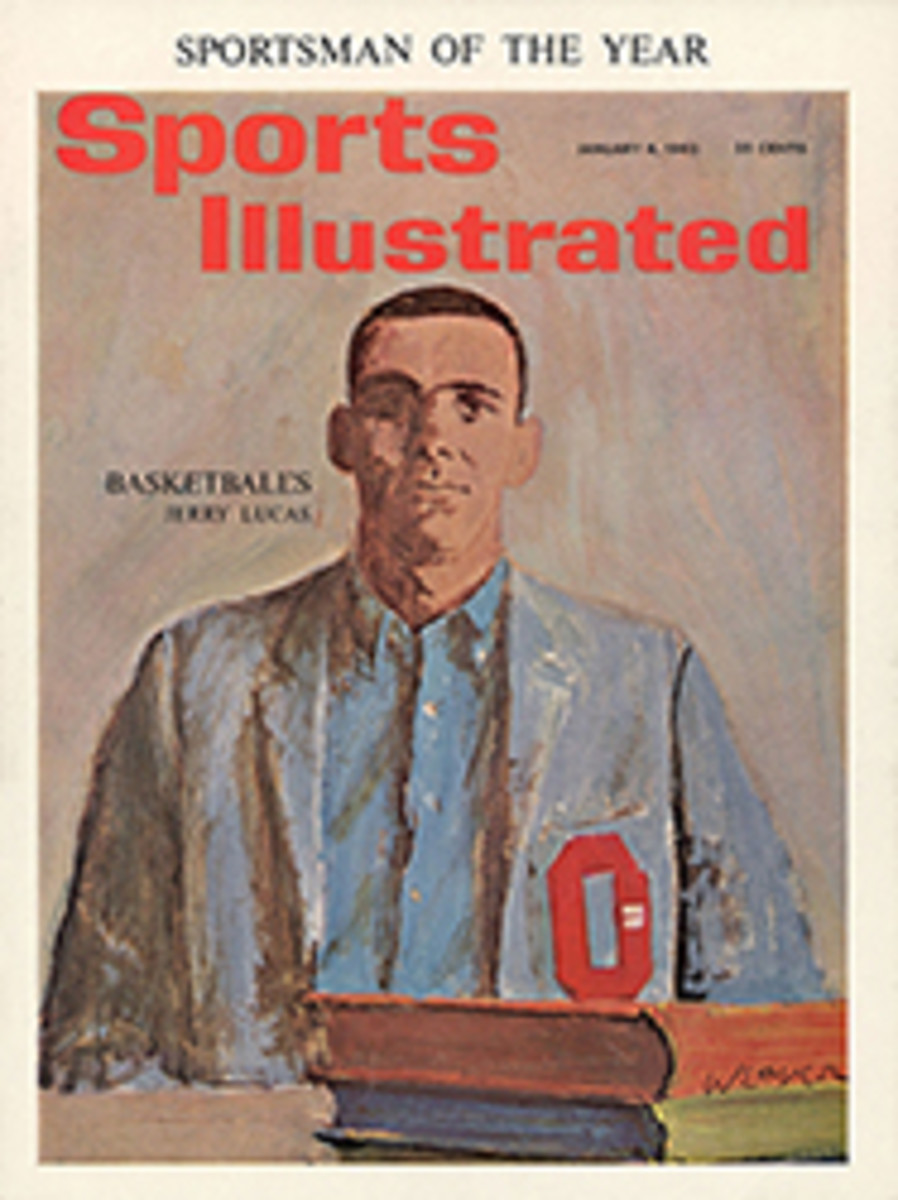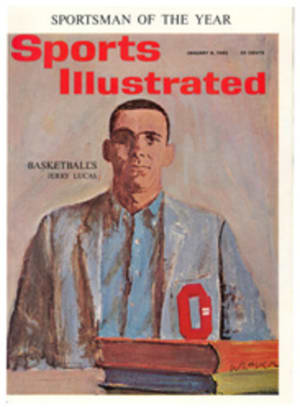
AT LAST—ONE MOVE FOR EVERYBODY
Learning to ski has become much more complicated than it needs to be. Every resort seems to have adopted some special technique—or developed a variation of its own. And even if a ski school teaches the flexible, functional shortswing, there is still too much difference between the things beginners learn and the things taught to advanced skiers. Novices have trouble when they go from the snow-plow to the sideslip, and intermediate skiers have an awful time getting from the stem to a parallel turn. One reason is that they don't understand how one move grows out of another. But, far more important, until now no one has taught them the simplest, most fundamental lesson of all: that in all phases of skiing there is one movement of one part of the body that basically controls the skis.
This is the movement of the outside, or downhill, knee. This is the key to skiing. It is true whether the skier is blasting through a high-speed parallel turn, as Shortswing Expert Miki Hutter shows at left, or is struggling with the snowplow. It is the only move that is constant in every type of Alpine skiing and at every level of ability (see following pages). Therefore it is above all the thing most worth learning.
THE SNOWPLOW
Most instructors teach beginners the snowplow as a way to slow down or stop. This is fine, as far as it goes, but it does not go far enough. What the beginner really should learn from the snowplow is edge control, the subtle shifting of the knees that regulates the angle at which the skis brush over the snow or bite into it. To get into the plow, stand knock-kneed and flex the knees and ankles until the kneecaps are about on a line with the toes of your boots (inset, right). In this position your knees are inside the line of the skis, and you are in control. By shifting the knees outward, the skis will flatten out and start sliding. When you bring the knees back in again, the inside edges will bite and you will stop. Never, in the snowplow or any other maneuver, let your knees get too far out (foreground below); this position is stiff, awkward, and immediately precedes a fall.
SNOWPLOW TURN
To a novice the snowplow turn is the start of real downhill skiing. To most experts it is a bore. These experts, and all novices, are invited to study the sequence at right. The controlling movement in each turn is a bending of the outside knee, and this is exactly the same movement that controls the fancy, hip-swinging Wedeln on pages 52-53. At the start of the sequence Hutter is coming straight down the slope, weight forward, skis and knees exactly balanced. Then he bends his left knee a little deeper and slightly inward and puts most of his weight on the left ski. The inside edge of the weighted ski digs in, the tail brushes out across the snow and he starts to turn. To go the other way he bends the right leg forward and in and shifts his weight to the right. At bottom he swings back again. Inset at left shows difference in the knees during turn to the right.
THE SIDESLIP
Once you bring your knees and skis tight together, as you must for more advanced skiing, life seems more precarious. The broad, tricycle stability of the snowplow is gone. But there is no fundamental change in technique. The basic movements, with the downhill knee in the sideslip (below) and the downhill—or outside knee—in a swing to the slope, are the same as in the snowplow. With the sideslip, you learn for the first time to control the edges of two parallel skis. As the picture above shows, you do this with the knees, not the ankles, as is usually taught. In fact, if your weight is forward, as it should be when skiing, you cannot make any rotary movement with your ankles; they are locked and won't roll either way. The knees, however, are free to work. By holding the downhill knee just inside the line of the boot (above right), then shifting it outward (center), you can start the skis slipping sideways. Then, with a fairly sharp inward movement of the knees (left), you dig the edges of the skis into the snow and they stop sliding. Practice this over and over again, in faster and faster sequence, and do it without looking at your skis. The feeling of control is what you must have, because later on, in a fast run over difficult terrain, if you look down at your skis instead of watching the trail ahead, you've had it.
SWING TO THE SLOPE
This is the graduate version of the sideslip, for now you start out heading down the slope instead of across it. The running position, however, is the same, and so is the knee action. As Hutter begins the swing, his skis and knees are together, weight on the outside ski, hips and shoulders turned slightly downhill in the correct shortswing position. Then (below) he flexes the outside knee and draws it in toward the slope. Note that at the same time he bends his ankles forward, thus shifting his weight ahead so that the forward edges of the skis will bite and the tails will swing around freely. At the same time, too, he swivels his shoulders and hips in the opposite direction from the turn. From this position—weight forward, hips and shoulders drawn back, knees flexed, he is perfectly coiled to deliver the heel thrust that ends all shortswing turns. And here again it is the knee action that controls the maneuver. If he edges the skis sharply and thrusts hard, as he is doing here, he will stop dead. If he uses less knee action, edging more subtly and making a gentler thrust, he will slow momentarily, then continue his descent. Whatever he does, he will do it primarily with his knees, and he will do it just as he did in the straight sideslip, the only difference being the slight forward weight shift and shoulder movement that make the tips dig in and the tails start swinging.
THE STEM TURN
About 90% of all skiers use the stem turn, with varying degrees of polish. As soon as the novice begins to get his feet together, his snowplow turn quickly works into a stem. And usually it stays there forever. If you were to study slow-motion movies of the world's flashiest parallel skiers, you would see that when they are tired or careless—or in momentary doubt—they will use a tiny stem. The turn itself, shown here on a gentle, packed slope, combines all the elements discussed on the previous pages. Hutter starts off (1) with knees and skis together as he did in the swing to the slope. Then (2) he stems out with his right ski, bends the right knee in and down as he shifts his weight onto that ski (3). Note that the knee of the weighted ski is forward and inside the arc of the turn just as it was in the snow-plow turn. Once past the fall line (4), he brings his inside ski back alongside the outside ski and finishes the turn with a heel push (5). Small photographs show how knees should look to you as you first practice the turn.
THE WEDELN
This is the climax of skiing, a fast series of graceful parallel turns. Before the shortswing, it was difficult to link two turns in less than about 30 yards. The early shortswing cut that in about half. Now, by emphasizing the knees, a crack skier like Hutter or Othmar Schneider or Karl Fahrner can make up to nine turns in that distance. Below, Hutter is running straight down the slope. Then he ducks his left knee forward and in and puts his weight on the left ski—instantly he turns to his right. With a quick weight shift, the right knee goes forward and in, and he turns back. Then the left knee and, finally, again the right. These lightning turns, governed almost entirely by knee action, give Hutter absolute control on the narrowest, steepest trails. They represent perfect ski technique.
FOUR PHOTOS
JOHN G. ZIMMERMAN
FIVE PHOTO ILLUSTATIONS
JOHN G. ZIMMERMAN; PHOTOTECHNICAL ASSISTANCE BY WILLIAM BERNSTEIN
PHOTO ILLUSTRAION
JOHN G. ZIMMERMAN; PHOTOTECHNICAL ASSISTANCE BY WILLIAM BERNSTEIN
1
2
3
4
5
PHOTO
JOHN G. ZIMMERMAN
1
PHOTO
JOHN G. ZIMMERMAN
2
PHOTO
JOHN G. ZIMMERMAN
3
PHOTO
JOHN G. ZIMMERMAN
4
PHOTO
JOHN G. ZIMMERMAN
5

